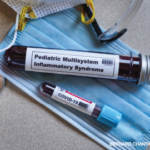NEW YORK (Reuters Health)—Two new reports in JAMA strengthen the link between SARS-CoV-2 infection and pediatric inflammatory multisystem syndrome (PIMS).
Pediatricians from several communities have reported children who developed fever and multisystem inflammation during the COVID-19 pandemic. Some children were critically ill and some had characteristics similar to Kawasaki disease or Kawasaki disease shock syndrome.
Dr. Michael Levin from Imperial College, London, and colleagues describe the clinical and laboratory characteristics of 58 children admitted to eight hospitals in England who satisfied published criteria for PIMS temporally associated with SARS-CoV-2 infection (PIMS-TS).1
The median age of these children was 9 years, 57% were girls and 69% were of black or Asian race. Only seven had comorbidities: three with asthma and one each with neurodisability, epilepsy, sickle cell trait and alopecia.
All children had persistent fever for three to 19 days, and some had abdominal pain (53%), erythematous rash (52%), conjunctival injection (45%), headache (26%) and sore throat (10%).
Half of the patients required admission to the pediatric critical-care unit, 47% had shock requiring inotropic support and 43% received mechanical ventilation for respiratory support.
Overall, 45 patients (78%) had evidence of current or prior SARS-CoV-2 infection.
All children had evidence of a marked inflammatory state, with significant elevations in C-reactive protein, ferritin, troponin and N-terminal pro-B-type natriuretic peptide (NT-proBNP), along with neutrophilia.
The authors identified three provisional clinical patterns: 23 children had persistent fever and elevated inflammatory markers, but no features of organ failure or mucocutaneous features suggestive of Kawasaki disease or toxic shock syndrome; 29 children developed shock, with evidence of left ventricular dysfunction or with elevation of cardiac enzymes; and seven fulfilled the American Heart Association diagnostic criteria for Kawasaki disease (13 children met the criteria when coronary artery aneurysms were included).
One child died from PIMS-TS.
Patients with PIMS-TS tended to be older than reported cases of Kawasaki disease or Kawasaki disease shock syndrome or toxic shock syndrome and had higher white blood cell count, neutrophil count, and C-reactive protein, as well as more profound lymphopenia and anemia, compared with Kawasaki disease or Kawasaki disease shock syndrome patients.
“This suggests that PIMS-TS differs from these other pediatric inflammatory entities,” the authors note. “As these cases have emerged in temporal association with the pandemic, a link with SARS-CoV-2 is likely.”
Stanford T. Shulman, MD, of Lurie Children’s Hospital of Chicago, Northwestern University Feinberg School of Medicine, who recently reviewed early reports of PIMS in association with COVID-19, told Reuters Health by email, “Categorizing patients has been a problem, including in this paper in which three distinct groups of patients are described.”


